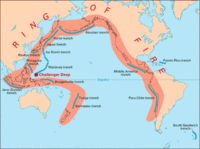-
SFPD announce new mobile application for police in the field
Earlier this week Mayor Edwin Lee of San Francisco joined the San Francisco Police Department and San Francisco Citizens Initiative for Technology and Innovation (sf.citi) to announce a new mobile application which will enable police officers to report remotely from the field and share reports in real time, improving police department efficiency for officers by an estimated 40 percent daily
-
-
Clay-based coating holds promise of green flame retardants
The thick, fast-forming coating has a uniformly high concentration of flame-inhibiting clay particles, and it adheres strongly to the Swiss cheese-like surface of polyurethane foam, which is used in furniture cushions, carpet padding, children’s car seats, and other items
-
-
Container ships as offshore platforms for direct support to disaster zones
DARPA’s Tactically Expandable Maritime Platform (TEMP) program has completed the design of technologies to transform commercial container ships into self-contained floating supply bases during disaster relief operations, without needing port infrastructure
-
-
Biometrics proves 1 percent of applicants to enter U.S. are unsuitable
Chris Archer, the online content editor at IDGA (the Institute for Defense & Government Advancement), talked with James Loudermilk, Senior Level Technologist, FBI Science and Technology Branch, about biometrics and biometrics and homeland security; Loudermilk says that biometrics applications helped the FBI determine that about 1 percent of people who seek visa to visit the United States as tourists have previously done things that make them unsuitable guests; the conversation examines the application of biometrics for homeland security, issues relating to privacy and civil liberties, and what can be learned from international biometrics projects, including India’s UID scheme
-
-
Mega-quake hotspots around the world

The 2010 earthquake in Haiti killed hundreds of thousands and destroyed large sections of the capital, Port au Prince; the clock is ticking on many earthquake faults throughout the world, and a comprehensive new book points to places around the world that could face the fate of Port au Prince
-
-
Crowd dynamics explains disaster at cultural, sports events
Physicists investigating a recent crowd disaster in Germany found that one of the key causes was that at some point the crowd dynamics turned turbulent, akin to behavior found in unstable fluid flows
-
-
Supreme Court deals near-fatal blow to Arizona SB 1070; states’ immigration efforts now in question

In a major victory for the Obama administration, the U.S. Supreme Court yesterday struck down three of the four main provisions in Arizona’s tough SB 1070 immigration law, saying these provisions were pre-empted by federal law; the Court left in place the fourth provision – the one requiring Arizona local law enforcement during routine stops to check the immigration status of anyone they suspect is in the country illegally – but in reading the provision very narrowly, the Court left its implementation open to legal challenges on grounds that it violates racial profiling prohibition and other laws; in any event, the administration moved quickly to make that remaining provision meaningless by pulling back on a program known as 287(g), which allows the federal government to deputize local officials to make immigration-based arrests; the move means that even if local police step up immigration checks, they will have to rely on federal officials to make the arrests
-
-
Turf wars: math model shows crimes cluster on borders between rival gangs

A mathematical model that has been used for more than eighty years to determine the hunting range of animals in the wild holds promise for mapping the territories of street gangs; among other things, the research demonstrates that the most dangerous place to be in a neighborhood packed with gangs is not deep within the territory of a specific gang, as one might suppose, but on the border between two rival gangs
-
-
Immigration growth in Spain has not caused more crime
Society tends to perceive an increase in the immigrant population with an increase in crime; according to a new study, however, it is not possible to infer this cause-effect relationship in the case of Spain
-
-
Forensic research using DNA sequencing technology
The Ion Personal Genome Machine (PGM) Sequencer translates chemical sequencing information directly into digital form by using semiconductor technology; it enables the analysis of ninety-six samples in one run, allowing forensic practitioners to obtain more information from the samples they process; the sequencer is suitable for a wide array of forensic identification applications, including missing persons identifications, mass disaster work, interpretations of complex mixtures, and bio-defense
-
-
Researchers advance biometric security
Researchers have developed a way for security systems to combine different biometric measurements — such as eye color, face shape, or fingerprints — and create a learning system that simulates the brain in making decisions about information from different sources
-
-
Gun shop which sold gun to Virginia Tech killer closes its doors

Madison, Wisconsin-based online weapon dealer TGSCO, which gained notoriety after it was disclosed that it had sold guns to three individuals – including the Virginia Tech killer — who then went on to commit mass killings, closed its doors last month
-
-
News: Man bites dog
A 22-year old man name Keith Glaspie, running away from police officers in Wilmington, North Carolina was chased and caught by well-trained, 2-year old police dog named Maxx; when Maxx would not let go of the Glaspie’s pants, preventing him from moving, Glaspie tore into Maxx’s ear with his teeth, severing the dog’s ear in two
-
-
New method uses gunshot residue to determine caliber, type of weapon used in crime
Researchers have developed a method to determine the caliber and type of weapon used in a crime by analyzing gunshot residue (GSR); using near-infrared (NIR) Raman microspectroscopy and advanced statistics, the new technique may play a pivotal role in law enforcement cases and forensic investigations
-
-
Smartphone app offers sex offender information
Two of the providers of technology to local sheriffs’ offices have announced a new content publishing agreement that will offer the public information on sex offenders
-
More headlines
The long view
Tantalizing Method to Study Cyberdeterrence
Tantalus is unlike most war games because it is experimental instead of experiential — the immersive game differs by overlapping scientific rigor and quantitative assessment methods with the experimental sciences, and experimental war gaming provides insightful data for real-world cyberattacks.
Using Drone Swarms to Fight Forest Fires
Forest fires are becoming increasingly catastrophic across the world, accelerated by climate change. Researchers are using multiple swarms of drones to tackle natural disasters like forest fires.
Testing Cutting-Edge Counter-Drone Technology
Drones have many positive applications, bad actors can use them for nefarious purposes. Two recent field demonstrations brought government, academia, and industry together to evaluate innovative counter-unmanned aircraft systems.
European Arms Imports Nearly Double, U.S. and French Exports Rise, and Russian Exports Fall Sharply
States in Europe almost doubled their imports of major arms (+94 per cent) between 2014–18 and 2019–23. The United States increased its arms exports by 17 per cent between 2014–18 and 2019–23, while Russia’s arms exports halved. Russia was for the first time the third largest arms exporter, falling just behind France.
How Climate Change Will Affect Conflict and U.S. Military Operations
“People talk about climate change as a threat multiplier,” said Karen Sudkamp, an associate director of the Infrastructure, Immigration, and Security Operations Program within the RAND Homeland Security Research Division. “But at what point do we need to start talking about the threat multiplier actually becoming a significant threat all its own?”
The Tech Apocalypse Panic is Driven by AI Boosters, Military Tacticians, and Movies
From popular films like a War Games or The Terminator to a U.S. State Department-commissioned report on the security risk of weaponized AI, there has been a tremendous amount of hand wringing and nervousness about how so-called artificial intelligence might end up destroying the world. There is one easy way to avoid a lot of this and prevent a self-inflicted doomsday: don’t give computers the capability to launch devastating weapons.
